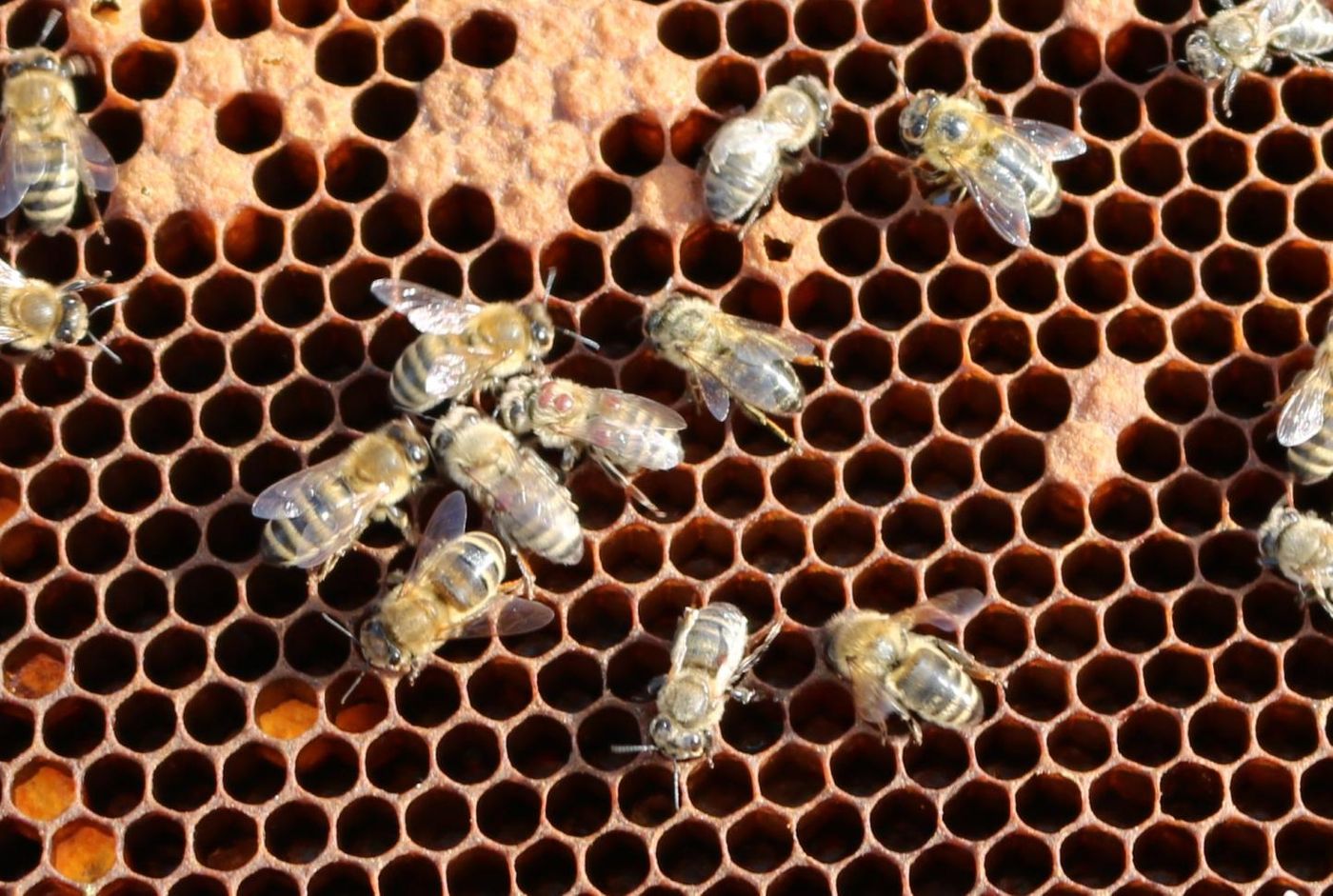By using an artificial sample of deformed wing virus (DWV), researchers have been able to learn more about the progression of disease,
reporting their findings in PLOS ONE. The virus is carried by a parasitic mite, Varroa destructor, and there is a strong association between the collapse of bee colonies and infestation with this mite. Thus, there is a general consensus that DFW is likely a primary cause of bee mortality. Learn more about DFW by viewing the following video.
Honey bee colonies are a critical part of the production not only of honey and wax but also of fruits and vegetables through their role in pollination. There have been massive losses in bee colonies in recent years in North America and Europe. This loss can lead to dire effects, such as that seen in China, where fruit trees now have to be hand pollinated after heavy use of pesticides cause a devastating decline in the wild bee population.
Scientists working on DWV have had to use samples obtained from infected bees, which has presented challenges to the research because of heterogeneity. “Mixed and multiple infections can bias the results of such tests", explained lead author of the work, Benjamin Lamp.
DWV is one of the Iflaviridae viruses, which are single-stranded RNA viruses, as opposed to double-stranded DNA based mammalian organisms. Varroa mite hive infestation is mostly, but not always, present along with the virus. "The virus persists in the hives and can even be detected if there are no parasites in the hive," explained Lamp.

To learn more about it, the researchers turned to artificial genetic material rather than natural samples of DWV. “Initially, we amplify the genetic RNA material of a virus and save it as a DNA copy in a vector, a specific transport vehicle for genetic material. The resulting molecular clone enables us to produce artificial viruses, which are identical and genetically defined," explained Lamp. The specific nature of the virus allowed the researchers to draw firm conclusions on what it caused in the bees. The same symptoms were seen in different bees, such as discoloration, dwarfism, death or the classical wing deformations that also occur in natural infections.
The investigators were of course able to perform their tests under laboratory conditions as well, giving them a look at infection in various life stages like larvae and pupae. High levels of viral proteins were present in gland, neural, and connective tissues.
"The high concentrations of viral proteins -- the antigens -- in the glands could also indicate an oral transmission of the virus from one bee to another in the hive," explained senior author Professor Till Rümenapf, head of the Institute of Virology at the University of Veterinary Medicine, Vienna.
There are other strains of the virus that can now be studied using the same methods. "In many cases, a bee is not only infected with one virus species. Our test system provides a tool to find out, which viruses are especially harmful and how viruses behave in multiple infections," said Lamp. "Thus, we can develop targeted strategies against disease-causing viruses."
Sources:
AAAS/Eurekalert! via
University of Veterinary Medicine, Vienna,
Huffington Post,
PLOS ONE










